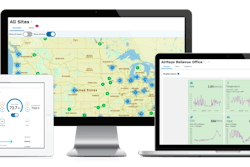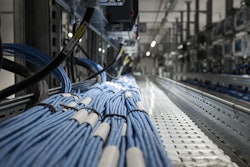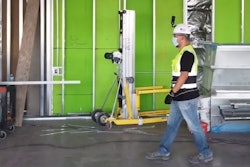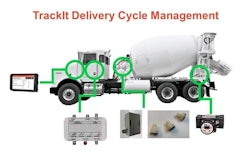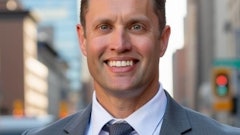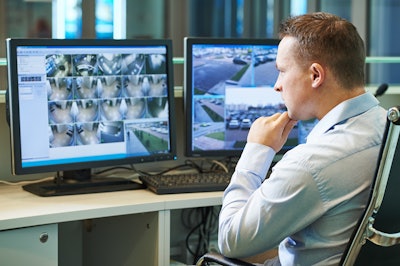
Remote surveillance is rapidly becoming a helpful tool for remote project management and safety compliance for construction and other work sites. As the pandemic prompted a shift toward remote work, advances in remote surveillance technology and a wider range of applications became more apparent.
This shift has prompted an increase in remote surveillance as a protective and organizational measure beyond its primary security function. Companies are under greater pressure to reach deadlines than ever before, often with fewer staff members available to make it happen. Therefore, improving efficiency and maintaining a safe work environment are crucial for worker safety and retention.
Retail, construction, and manufacturing have traditionally made the most use of surveillance from a safety standpoint to monitor theft. Now, other industries have begun to use surveillance to assess productivity, resources, and business processes to optimize operations from the convenience of a centralized location.
Maintain Health and Safety Protocols
Where possible, organizations have urged employees to work from home, but certain industries are inoperable without an on-site labor presence. This is where remote surveillance technology allows managers and stakeholders to effectively manage their workplace without physically being on the scene.
The option to review employee actions and general operational flow from a distance can go beyond simple monitoring. With video investigation available, it’s possible to discover new optimization opportunities as well.
Managers can even review footage to help resolve disputes or spot potential safety risks with major equipment before it spirals into a bigger issue. This is especially useful when it comes to safety incident review and process correction, on-site trespassing and quality assurance checks, all of which can help mitigate liability risk.
Reduce Overheads and Prevent Operational Disruption
Unplanned downtime can cost companies up to $260,000 per hour. Efficient project management entails keeping operational costs low where possible and mitigating risk. In manufacturing, remote condition monitoring can play a significant role in predictive maintenance and increased productivity.
It’s possible to predict equipment failures ahead of time to avoid unplanned downtime. Managers can also see how effective specific equipment is when it comes to facilitating whatever process is being handled.
Remote surveillance is also a beneficial tool for reviewing productivity for industries other than manufacturing. For example, your project managers can utilize it to monitor employee activity and progress toward deadline completion. This reduces the need for travel and additional on-site management for every possible location, which in turn significantly reduces the associated costs.
Keeping an eye on the use of resources, such as gear, equipment and job materials, enables careful assessment and strategy implementation to eliminate inefficiencies.
Surveillance can offer positive reinforcement when video and other metrics are used to identify what successful employees are doing right. Companies can leverage these insights as training and feedback to improve productivity.
Remote Surveillance Improves Security and Cuts Insurance Costs
You can manage any alert from nearly anywhere in the world, which is a huge advantage for business owners. Corporations, retailers, construction contractors, and many other industries require 24/7 security. The presence of surveillance cameras can help deter theft, vandalism and trespassing, and managed video surveillance provides the extra human insight layer of protection.
Additionally, surveillance systems directly impact insurance, potentially lowering premiums. Businesses typically experience an upfront premium reduction and then over time have reduced claims. Even though there’s an upfront cost needed to install surveillance equipment, reducing long-term risk is one of the easiest ways to minimize excess spending,
Theft, robbery and deliberate or accidental damage can cause massive losses and project delays. Even though surveillance and insurance don’t usually directly hold back a project from completion, not having them as a preventative measure opens up operations to immense, unnecessary risk.
Effective HR and Claims Management
Slip and fall injuries are the most common liability claims. While most are legitimate, some may be fraudulent. Effective remote surveillance monitoring lessens the likelihood of false claims succeeding. Reviewing footage is helpful to determine the cause of an incident and the direction your claim defense should take.
The same applies to employee disputes, which are bound to occur. It’s easier to understand what happened with supporting video material than merely relying on eye-witness accounts, which can be biased. This is especially pertinent in sexual misconduct or physical assault cases, whereby camera footage is incredibly useful to verify or disqualify charges.
Concerns around workplaces adopting Orwellian and Big Brother attitudes have arisen since the work-from-home revolution, particularly from employees, with fears of it filtering through to workplaces for those returning to on-site work. While some wrongfully abuse power, for the most part, remote surveillance is within the best interest of employees when lawfully and legally applied.
Access to Improved Data For Accurate Reporting
Some industries require complaint reports, which can be time-consuming as project managers need to visit different sites and then circulate and report their findings to colleagues. Today’s remote surveillance capabilities enable managers to pull data into report templates and share them online from the comfort of their desks.
In the same vein, remote surveillance is an excellent resource for evidence collection. You can review video footage to resolve employee disputes, check that correct materials have been used, proper procedures are carried out, or ensure contractor repairs were accomplished.
Remote Surveillance Monitoring Is the Future
The pandemic has demonstrated that technology can streamline work processes. And the potential that remote surveillance monitoring has to optimize the world of work, not merely monitor, is immense. From improved HR management to optimizing operational processes, there are many ways that remote surveillance monitoring adds value to businesses while supporting safety compliance and smooth project management.
Best of all, remote surveillance monitoring is easy and cost-effective to scale as projects and companies grow. This factor is crucial, considering that workplace practices adopted during the new normal may very well become the future way of life. Any organization that doesn’t leverage the advantages of surveillance monitoring is doing itself a great disservice.




